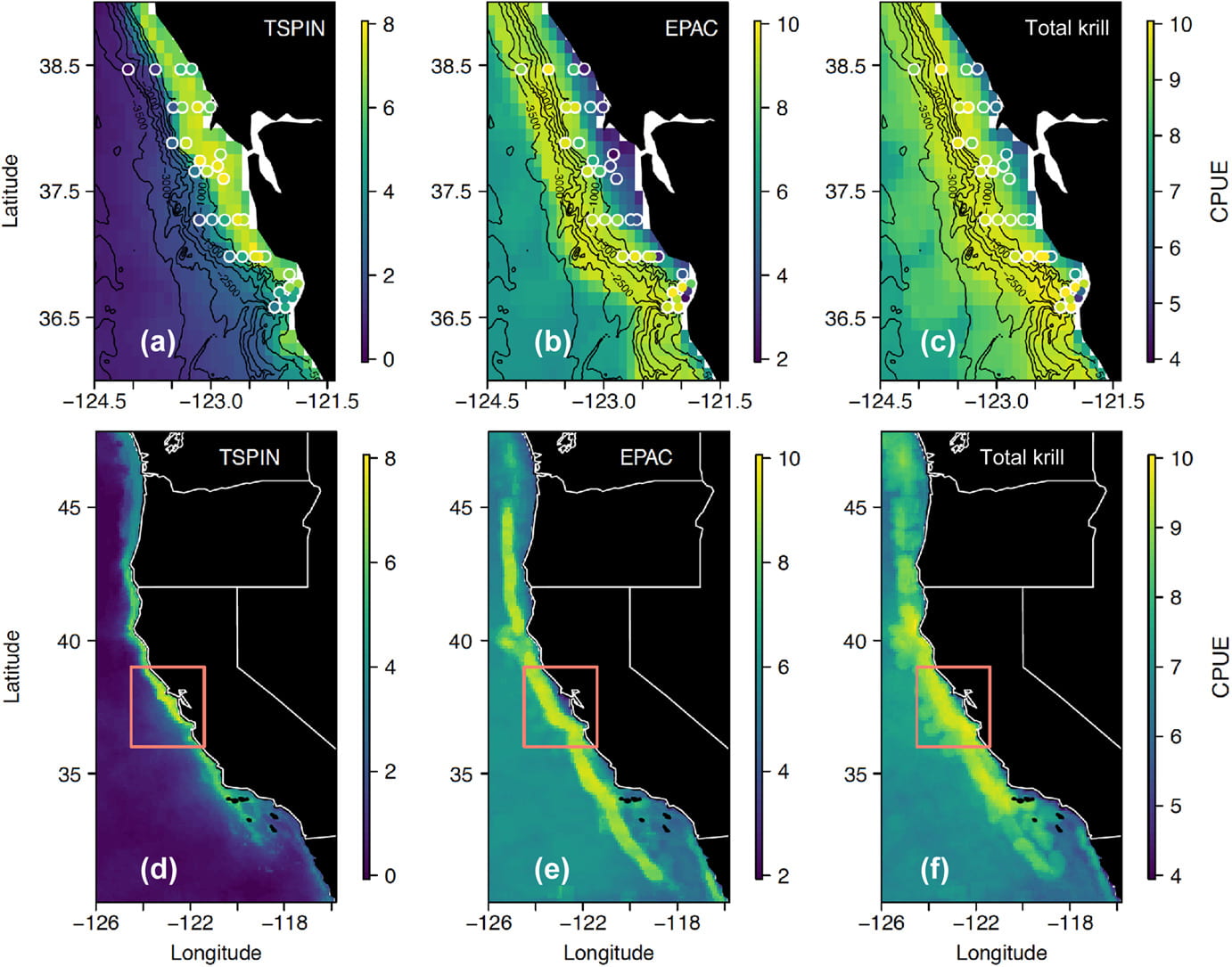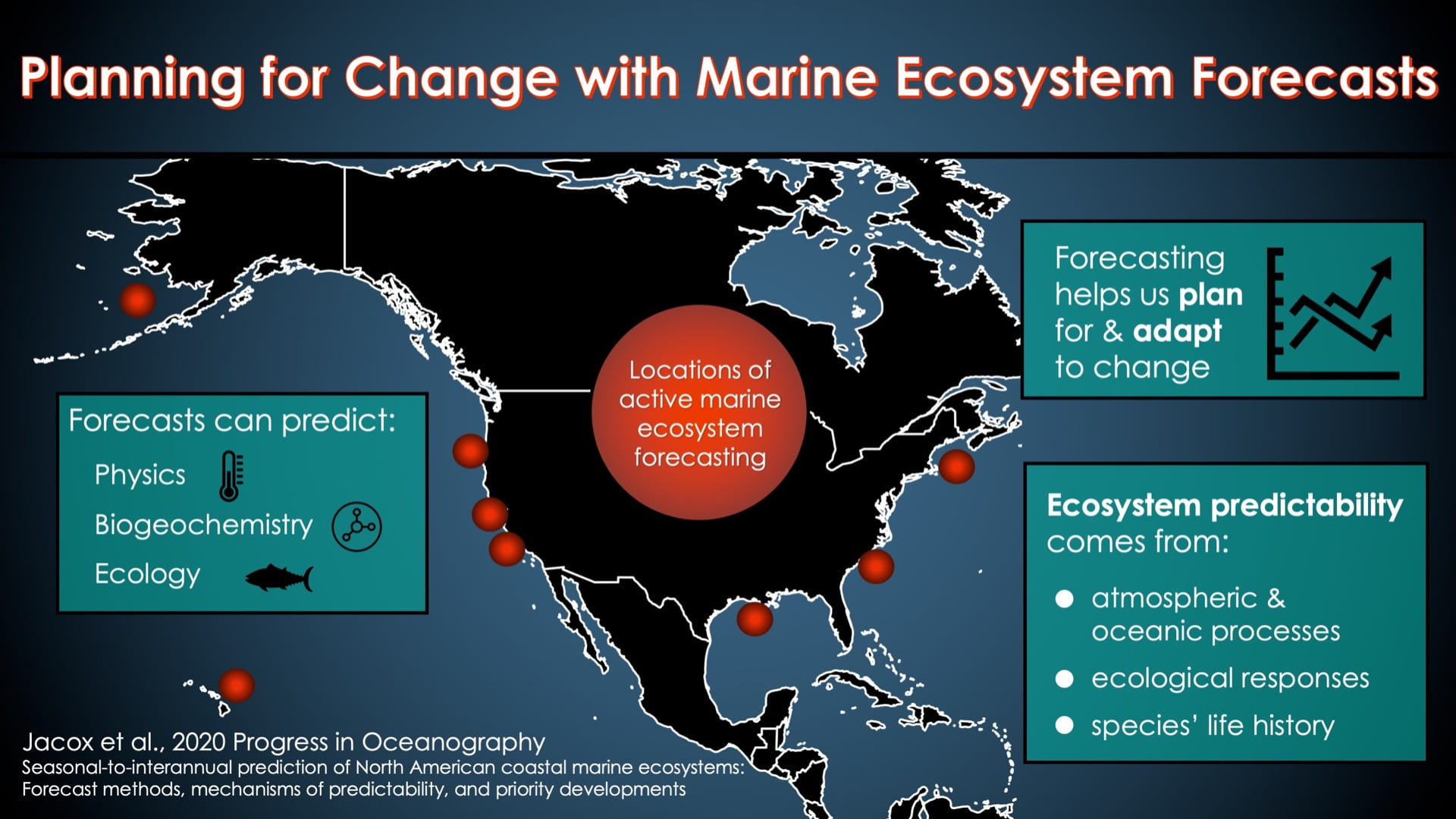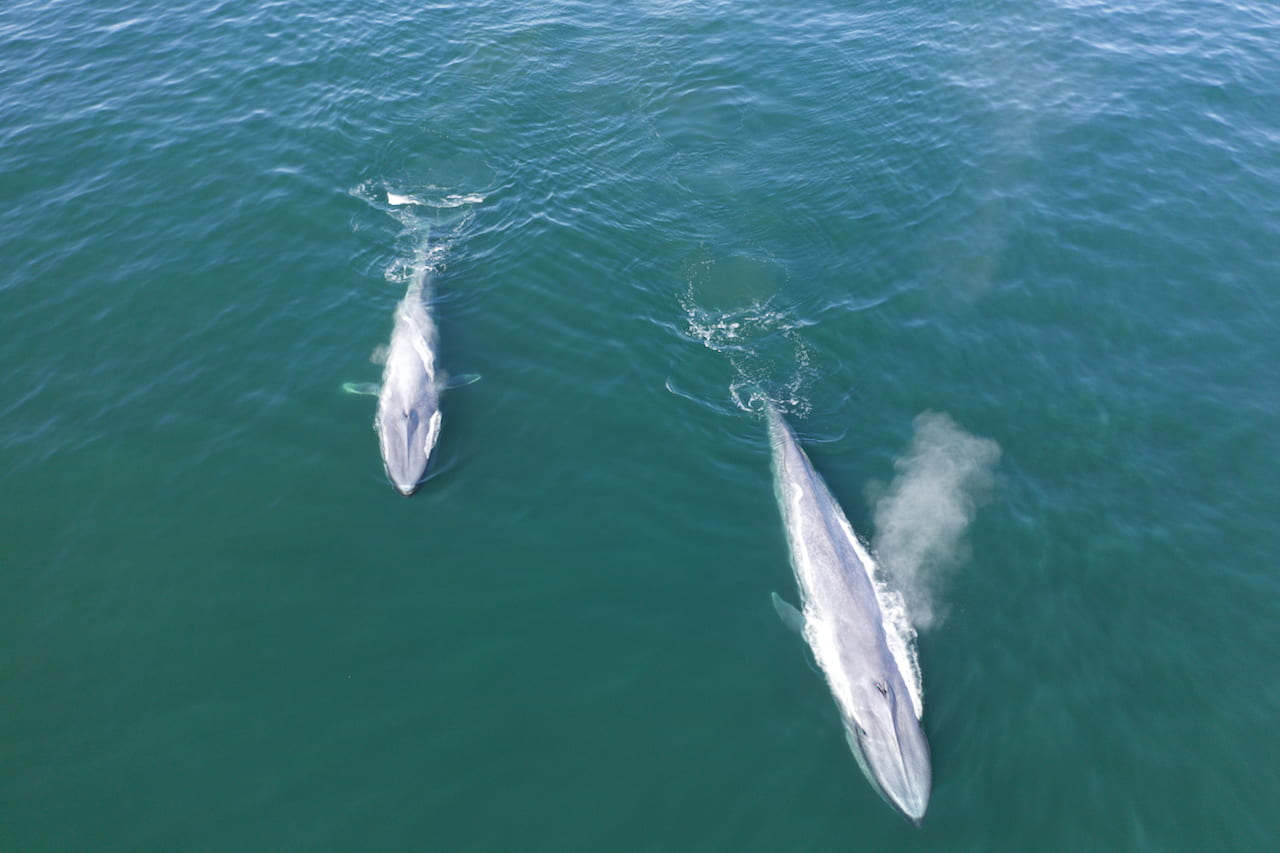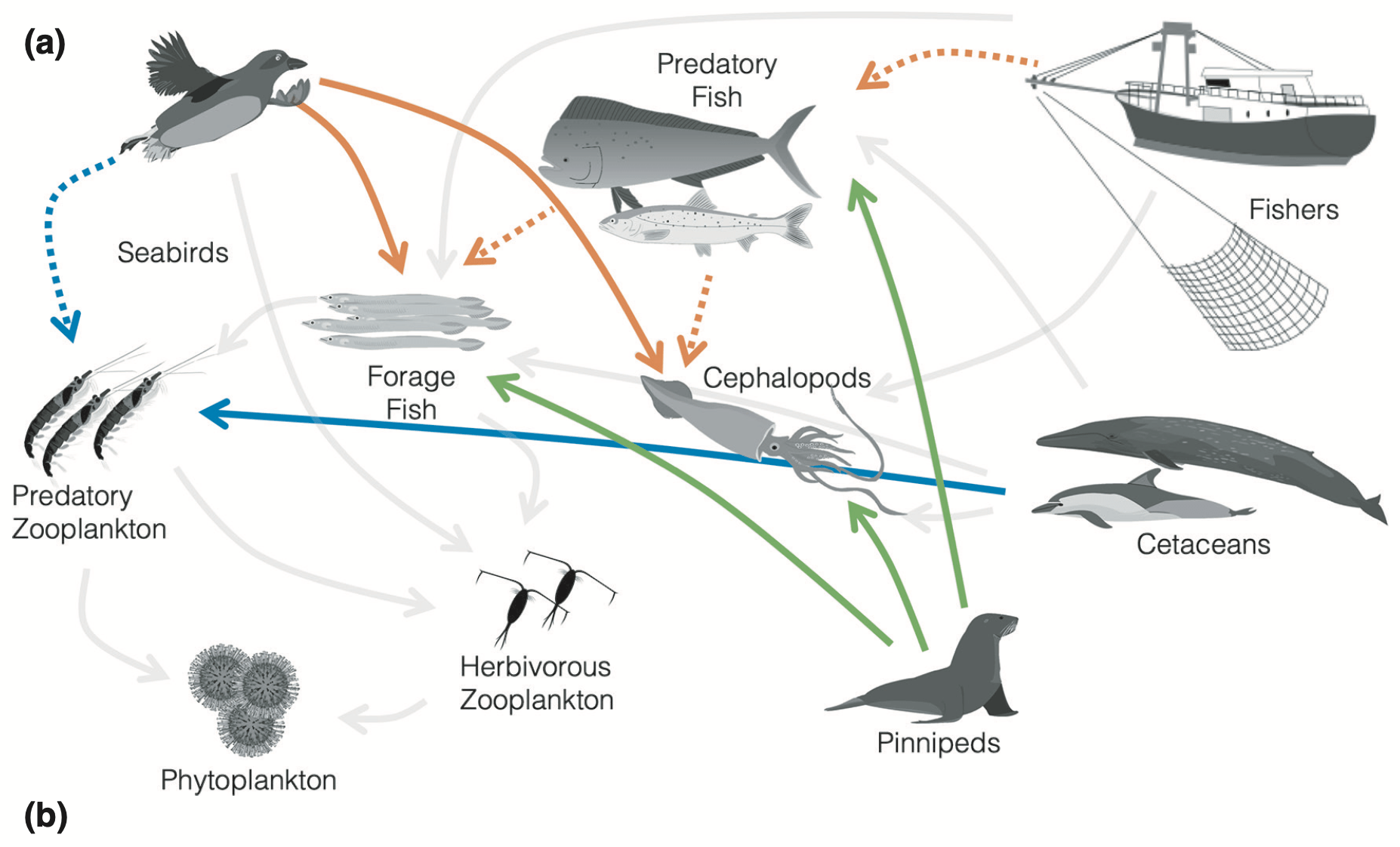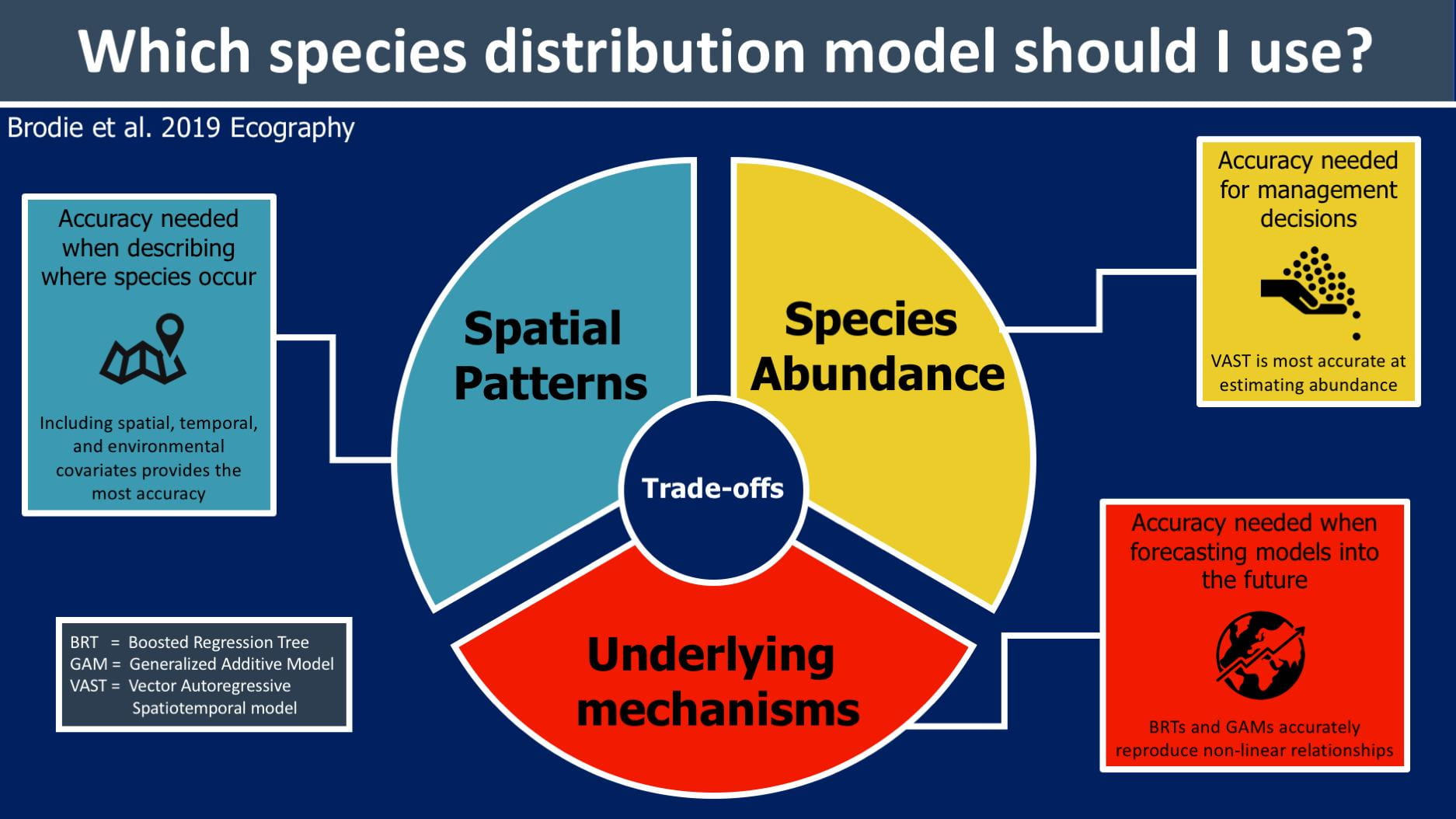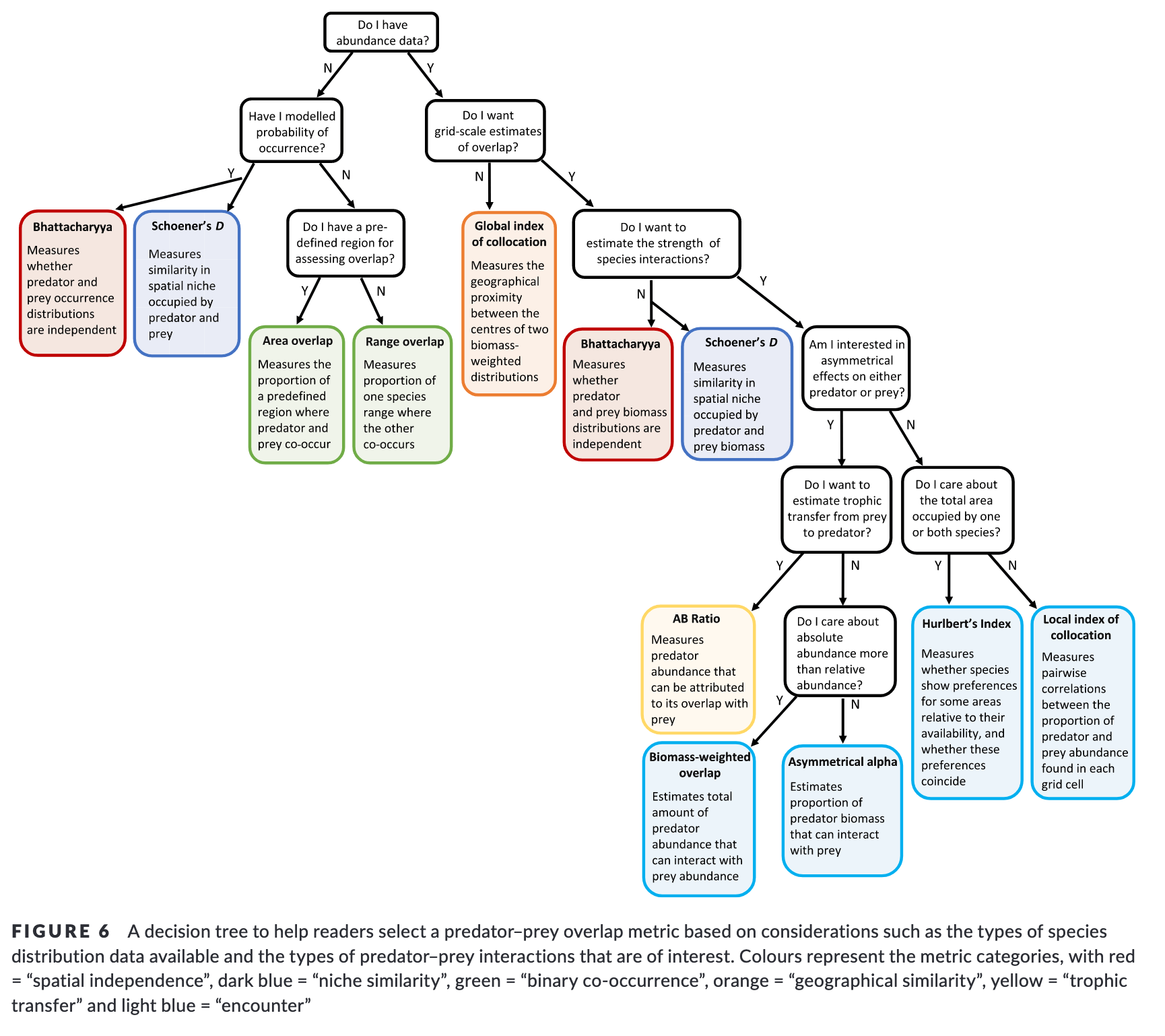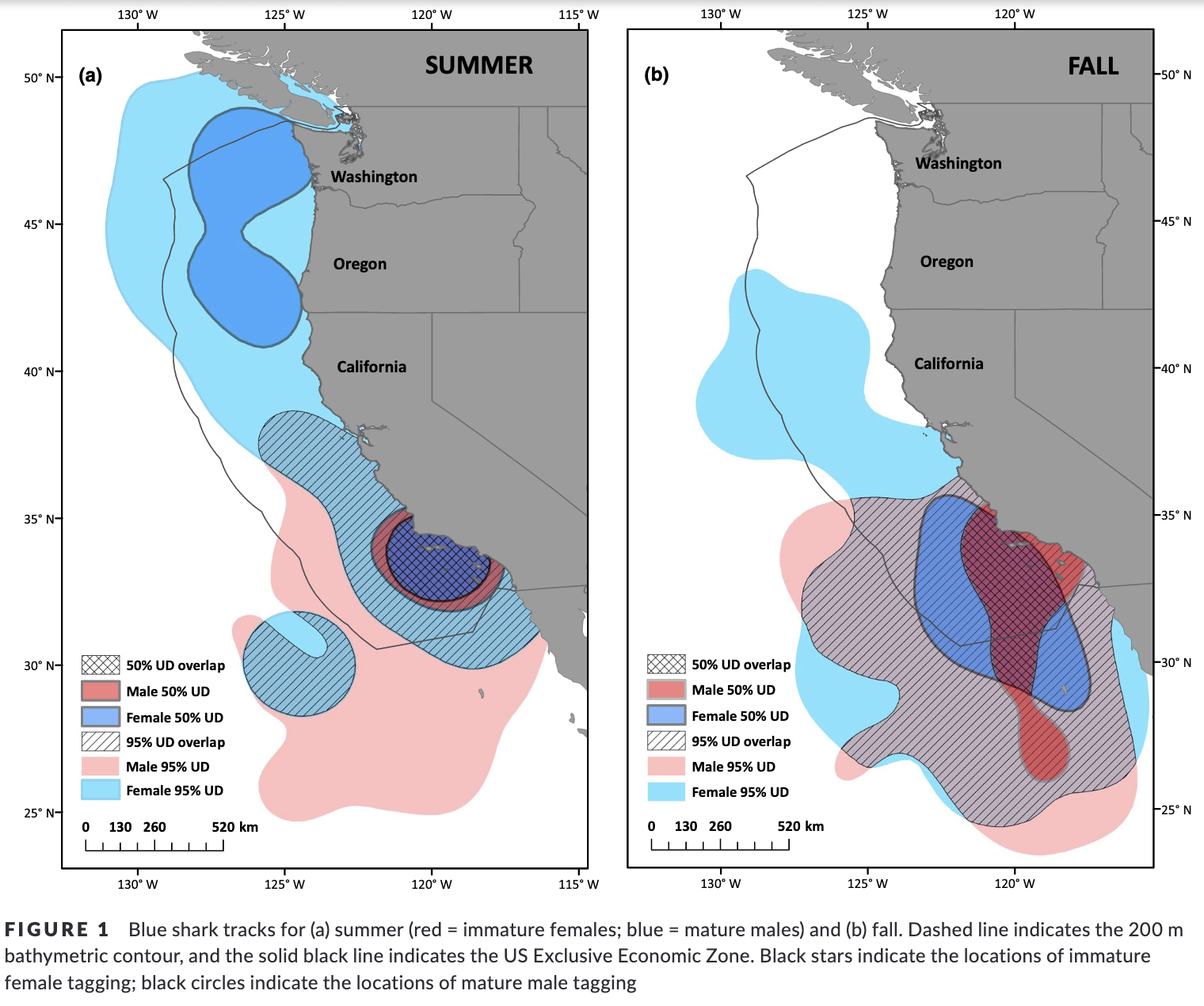A GRIP fellow from our group, Dr. Steph Dodson has published her work with us in Ecological modeling today, titled “Disentangling the biotic and abiotic drivers of emergent migratory behavior using individual-based models.” Using published info on blue whale movement and fine scale models of krill distribution, Steph was able to test whether an IBM could recreate observed movement timing and extent. Interested in more, please read below!
 Fig. 2. (a) Model algorithm in pictorial form. The acronym ARS stands for area restricted search. (b) Behavioral states for each model. Arrows indicate possible transitions. (c) Step length and turning angle distributions for all transiting and foraging states. These distributions have been scaled from Bailey et al. (2009) to account for the 6 h time step used in the IBM. A turning angle of 0∘ corresponds to straight in all behavioral states except of the north-south model, where instead 0∘ is due south.
Fig. 2. (a) Model algorithm in pictorial form. The acronym ARS stands for area restricted search. (b) Behavioral states for each model. Arrows indicate possible transitions. (c) Step length and turning angle distributions for all transiting and foraging states. These distributions have been scaled from Bailey et al. (2009) to account for the 6 h time step used in the IBM. A turning angle of 0∘ corresponds to straight in all behavioral states except of the north-south model, where instead 0∘ is due south.
Dodson, B. Abrahms, S.J. Bograd, J. Fiechter, and E.L. Hazen. 2020. Disentangling the biotic and abiotic drivers of emergent migratory behavior using individual-based models. Ecological Modeling. DOI: 10.1016/j.ecolmodel.2020.109225.

